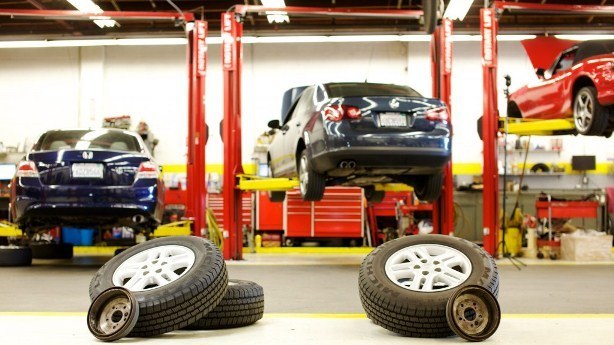Featured
Appropriate tire upkeep is key to prolonging the life of your automobile and making sure a smooth and safe driving experience. Two of the most vital tire solutions are tire rotation and alignment. These solutions not only avoid early tire wear but also enhance handling, fuel efficiency, and overall security. If you're not familiar with what tire turning and positioning require, below's an extensive take a look at why they matter and just how they benefit your vehicle.
What Is Tire Rotation? Tire turning refers to relocating your tires from one setting to one more to guarantee they use evenly. The reason tire turning is needed is because not all tires wear the exact same way.
By turning your tires frequently, you can cancel the wear throughout all four tires. This assists them last much longer and permits even more also traction, improving handling and stability. Most makers suggest rotating your tires every 6,000 to 8,000 miles or as per the car's manual.
What Is Tire Placement? Tire positioning, likewise understood as wheel alignment, refers to the process of readjusting the angles of your vehicle's wheels to fulfill the supplier's specifications. The objective of placement is to ensure that all four tires are directing in the right instructions and at the appropriate angles, which enables optimum handling, safety, and tire life.
There are three main positioning angles that are changed throughout a placement check:

Camber: The tilt of the wheels when viewed from the front. If the camber is off, it can bring about unequal tire wear, as the tire will not make complete contact with the roadway surface area. Caster: The angle of the guiding axis when viewed from the side. Correct caster alignment ensures that your automobile is secure when driving straight and that your wheel returns to its normal placement after a turn. Toe: The angle at which the tires aim inward or exterior when viewed from above. Wrong toe positioning can trigger the tires to drag, causing uneven wear and minimized gas effectiveness. Misalignment can happen gradually as a result of regular driving or from hitting obstacles like curbs or fractures. If your alignment is off, it's crucial to get it checked and remedied to prevent issues down the road.
Why Tire Turning and Positioning Issue. Increased Tire Life:. Normal tire turning makes sure even tire wear, aiding you obtain the most mileage out of your tires. Uneven wear can create you to change tires too soon, which can be costly. When your tires use equally, they last much longer, conserving you money in the long-term.
Improved Vehicle Handling:. Proper positioning maintains your vehicle driving straight and stable, particularly at higher rates. Misalignment can trigger your auto to pull away, making it tougher to steer. By keeping your tires straightened, you ensure your vehicle takes care of much more smoothly and naturally.
Enhanced Safety And Security:. Tires that are not turned or aligned properly can use erratically, affecting just how well your car quits and edges. Misaligned tires or tires with uneven wear patterns may trigger decreased traction, particularly in wet or icy conditions, leading to a greater danger of accidents.
Much Better Fuel Efficiency:. Tires that are misaligned can create rolling resistance, meaning your engine has to function more difficult to move the auto. This raises gas usage and lowers your car's gas performance. Proper tire alignment minimizes rolling resistance, which can boost gas mileage.
Signs Your Tires Need Turning or Alignment. While it's necessary to remain on top of regular tire turnings and alignments, there are a couple of signs that might show your tires require focus:
Uneven Use: If you discover that one tire is much more used than the others, it's most likely time for a turning. Guiding Pull: If your automobile pulls away or feels off-center, it could be a sign of misalignment. Vibrations: If you feel vibrations in the guiding wheel or the cars and truck, maybe because of an alignment issue. Noisy Tires: Screeching or loud tires could show inappropriate rotation or misalignment. If you see any one of these indicators, it is necessary to get your tires examined by a specialist.
Just How Typically Should You Rotate and Straighten Your Tires? Tire rotation must generally be done every 6,000 to 8,000 miles, though this can vary based upon your driving problems and the sort of automobile you drive. It's additionally an excellent idea to have your tires rotated whenever you obtain an oil adjustment.
For alignment, you should have your tires lined up every 1-2 years, or a lot more frequently if you notice any kind of issues with managing or uneven tire wear. If you struck a large fracture or aesthetic, it's wise to get a positioning examine right now.
Conclusion: Routine Maintenance for Optimum Performance. Tire turning and placement are 2 straightforward however important solutions that keep your cars and truck running smoothly, efficiently, and safely. By revolving your tires consistently and keeping your wheels correctly straightened, you can prolong the life of your tires, enhance handling, and appreciate better fuel performance.
Latest Posts
How to Prolong the Life of Your Plastic Fence?
Local Engine Maintenance Quickly! at MO
Full Circle Strategic Marketing - Social Media Strategies That Captivates Followers